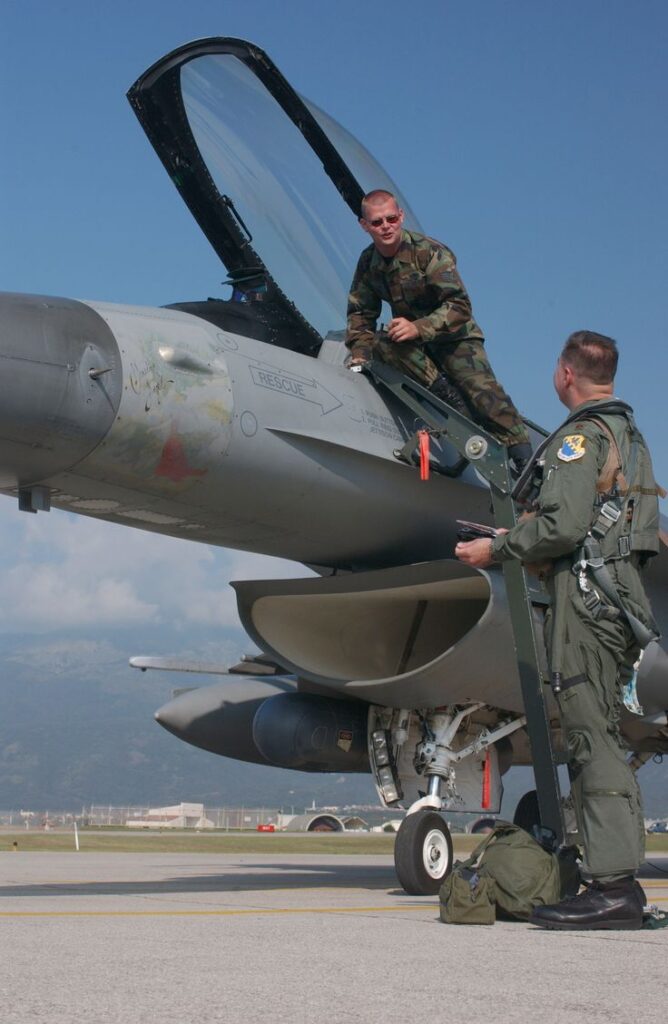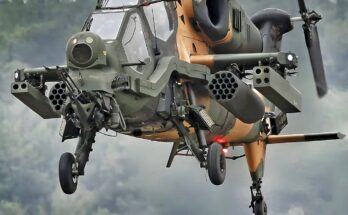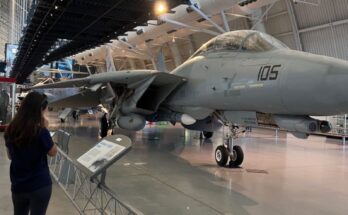
The relationship between an F-16CG crew chief and a pilot is one of the most vital partnerships in modern military aviation. While the pilot may be the one flying high above the clouds and executing the mission, the crew chief is the person who ensures that the jet is in perfect condition before it ever leaves the ground. This teamwork represents the backbone of operational success, combining technical expertise with trust, discipline, and mutual respect.
The F-16CG, a variant of the highly versatile Fighting Falcon, is known for its precision, agility, and combat capabilities. It is used extensively in both air-to-air and air-to-ground missions. Behind each sortie is a dedicated crew chief who knows every detail of the aircraft. The crew chief’s primary role is to oversee the maintenance, inspections, and readiness of the jet. From pre-flight checks to post-flight evaluations, the crew chief takes responsibility for the health of the aircraft. Every nut, bolt, and system has to be thoroughly examined to guarantee safety and mission effectiveness.
For the pilot, the crew chief is more than just a technician. Before stepping into the cockpit, the pilot depends on the crew chief’s assurance that the jet is ready to perform. This trust is built over countless hours of work and communication. Many pilots will say that when they strap into an F-16, they carry not just their own skills but also the confidence of their crew chief’s dedication. A handshake or a salute before takeoff symbolizes this bond—an unspoken agreement that each has done their part for the mission ahead.
Day-to-day life for a crew chief is demanding. Early mornings and long nights are common, especially during deployments or high-tempo operations. Crew chiefs often work in extreme conditions, whether it’s under scorching heat, freezing cold, or pouring rain. They carry the responsibility of ensuring that the jet, which costs millions of dollars and represents national defense, is ready at a moment’s notice. Despite the challenges, there is an immense sense of pride that comes from watching a jet you prepared roar down the runway and lift into the sky.
On the other side, the pilot experiences the aircraft in a way no one else can. The pilot trusts that every system will respond as expected, whether in combat maneuvers, high-speed chases, or precise bombing runs. When they return safely, the first person they often greet is their crew chief. This cycle of preparation, execution, and feedback forms a loop of continuous improvement, ensuring both the jet and the team remain sharp.
What makes the crew chief–pilot relationship unique is the human connection. Beyond the mechanics and technology, it is about people working toward a shared mission. Both roles demand discipline, but also an understanding of one another’s pressures. The pilot bears the weight of flying into danger, while the crew chief shoulders the responsibility of knowing that lives depend on their meticulous work.
In the world of the F-16CG, success is never a solo effort. It is the combined trust, professionalism, and dedication of the crew chief and pilot that keeps the mission alive. Together, they form a team where ground and sky meet—a partnership defined by precision, loyalty, and the pursuit of excellence.


